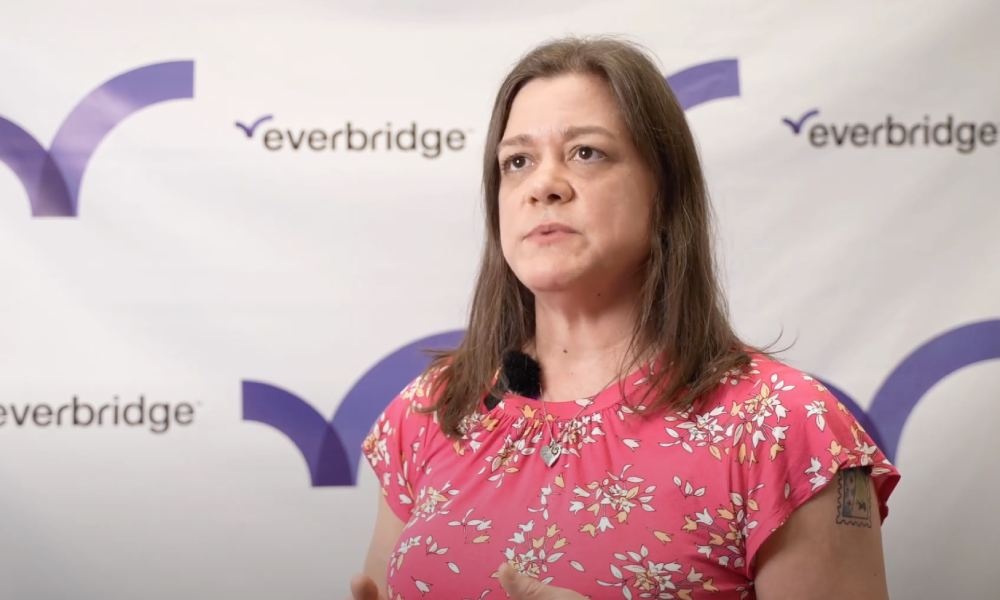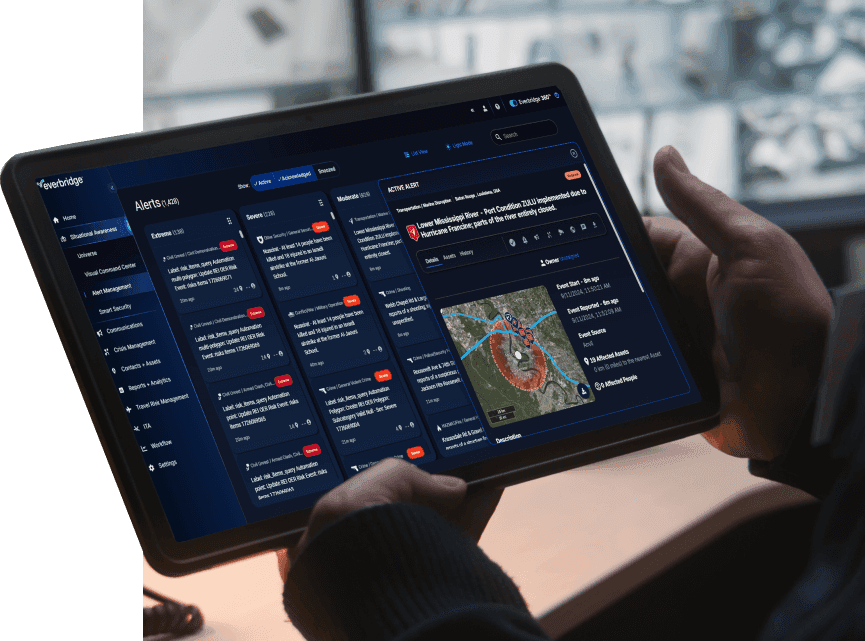Burns & McDonnell leverages Everbridge to enhance global safety and resilience by managing weather emergencies, ensuring traveler safety, and protecting their workforce and operations.
Full video transcript
[00:10.5]
We’ve used Everbridge to help us navigate critical events. Whenever we’ve had weather events that have affected our offices or some of our project and across the globe. Specifically last year with the hurricanes that were hitting in the southeast of the United States, we used Everbridge to give us a really good view of what offices are in the impact, to communicate out to our employees who are in the impact zones, and to determine which project sites we might have that would be impacted.
[00:40.5]
Using Everbridge has been really helpful for us with all of our travelers. We have a highly mobile workforce across the country and across the globe. So that really helps us feed in our traveler data, make sure that our people are safe. We’re able to notify them when they’re coming into a location or leaving a location.
[00:57.5]
It also helps us whenever we have, an actual event that’s happening message out as quickly as possible so that we can keep our people safe. I really enjoy the conference. Mostly the networking has been fantastic. Hearing how other companies are using the products. We actually use both Everbridge and BCIC, and so we’re really looking forward to the further integration of those two tools.
[01:19.0]
And so being able to network with people has been fantastic.
Everbridge 360 is a critical event management platform that strengthens resilience by helping you detect threats earlier, respond faster, and improve continuously. The Core version of Everbridge 360 helps organizations safeguard employees, maintain business continuity, and respond to emergencies with real-time insights, global reach, and reliable multi-channel messaging.
Everbridge 360 is a critical event management platform that strengthens resilience by equipping organizations to detect threats earlier, respond rapidly, and continuously improve. The Enterprise version of Everbridge 360 provides the most advanced features, such as cutting-edge analytics, enhanced automation, and exceptional scalability. It is designed to support large-scale operations, ensuring efficient responses and deeper insights into risks while maintaining seamless functionality for organizations with expansive needs.
Everbridge 360 is a critical event management platform that strengthens resilience by helping you detect threats earlier, respond faster, and improve continuously. The Professional version of Everbridge 360 provides advanced communication tools and mobile safety features to enhance capabilities, protect your workforce, and ensure smooth operations during emergencies.
This article originally appeared in International Security Journal
Ask any chief security officer how they protect their enterprise, and a security operations center (SOC) will often be one of the first things they mention.
The SOC has long been viewed as a necessary fixture – the nerve center for threat monitoring and crisis response. But as our operating environments evolve, so should our strategies. For many organizations, especially those balancing complex risks and finite resources, it’s worth asking: Does the traditional SOC still make sense?
Before anyone misunderstands – this is not about questioning the value of protecting people, data, and assets. It’s about being open to how we do it. Today, we have options. Options that offer the same, if not greater, levels of capability without the limitations of physical infrastructure.
Questioning the conventional wisdom
The traditional SOC has its merits. Centralized operations, dedicated teams and real time situational awareness. These have all served organizations well. I’ve worked in plenty of environments where a physical SOC was not only effective but necessary.
However, as someone who has spent a career assessing risk, I can tell you that static, brick-and-mortar solutions come with their own vulnerabilities – and, at times, may not be the best fit. Consider the challenges:
- Cost – physical SOCs require significant capital – equipment, facilities, and staffing. For some organizations it’s simply not sustainable.
- Resilience – a fixed location, by definition, is exposed to geographic and environmental risks.
- Scalability – expanding capacity, adding capabilities or adapting to changing threats can be slow and expensive when you’re tied to a physical footprint.
The case for a digital SOC
A digital SOC addresses many of these limitations head-on. By leveraging cloud-native platforms and purpose-built technology, we can deliver the same – an often superior – level of security without being bound by four walls. Here’s where digital SOCs stand out:
- Cost-effective without cutting corners – you don’t have to sacrifice quality for efficiency. Cloud-based platforms allow you to build scalable, full-featured security operations without investing heavily in physical infrastructure.
- Operational continuity – a digital SOC is resilient by design. It is immune to localized disruptions. Your team can monitor and respond from wherever they are and if you structure it correctly, there is no single point of failure.
- Integrated capabilities – today’s platforms do more than detect threats. They integrate crisis management, travel risk, communications and intelligence into a cohesive system. What once required multiple systems – and often multiple teams – can now be streamlined.
- Speed and precision through AI – AI has real utility here. Not the buzzword variety, but targeted capabilities that help detect, analyze and respond to threats faster. AI doesn’t replace your team – it makes them better. It brings scale, speed and precision that would be impossible to replicate manually.
- Future-ready – as threats evolve, so should your strategy. A digital SOC gives you the flexibility to adapt quickly, scale as needed and adjust your approach without waiting for the next capital investment cycle.
A balanced view
Like any solution, digital SOCs aren’t perfect. Integration, team alignment and vendor selection all require careful attention. And some organizations – particularly those with highly sensitive operations – may still require a physical presence. This is not a one-size-fits-all proposition.
But what is clear, is that clinging to the traditional SOC model out of habit is no longer a viable strategy. security has always been about resilience, adaptability, and smart resource management. Digital SOCs allow us to embody those principles more effectively.
Rethinking the mission
At the end of the day, your SOC – physical, digital, or hybrid – is a means to an end. Its job is to ensure your people, assets, and operations are protected. How you do that should reflect the realities of the treat landscape you face today, not the one we faced 15 years ago.
Security leaders need to be open to re-examining long-held assumptions. Not every organization needs to build a command center. But every organization does need the ability to know what’s happening, respond decisively, and keep improving. That’s what matters.

